Explore New Mexico’s abandoned mining towns, forgotten outposts, and Route 66 relics—each with its own story of grit, loss, and eerie beauty.
If you’ve ever driven down a dusty New Mexico back road and spotted a crumbling adobe wall, a sun-faded sign for a long-defunct dance hall, or a lone post office still stubbornly accepting junk mail—congrats. You’ve stumbled into one of the many New Mexico ghost towns.
More than 80 of these abandoned places are scattered across New Mexico: former mining camps, fading railroad stops, and forgotten frontier settlements. Some are nothing more than a cemetery and a good story. Others still have a tavern, a seasonal gift shop, or a handful of residents who’ve decided the past isn’t such a bad place to live.
What they all share is the classic New Mexico boom-and-bust rhythm: someone finds gold, silver, coal, or copper… a town springs up… and then fades out when the ore runs dry, the railroad changes course, or the bottom drops out of the market.
Much of the inspiration for this guide comes from Philip Varney’s excellent book New Mexico’s Best Ghost Towns, which breaks down sites by region and includes practical tips, suggested routes, photos, and historical insights for ghost town wanderers.
New Mexico isn’t short on ghost towns—but not all of them are worth your gas money. In this post, I’ll highlight some of the most compelling ones: places where you can still feel the past under your boots. Whether you’re chasing legends of Billy the Kid and Pancho Villa or just looking for a weekend detour, here’s where to go—and what you’ll find when you get there.
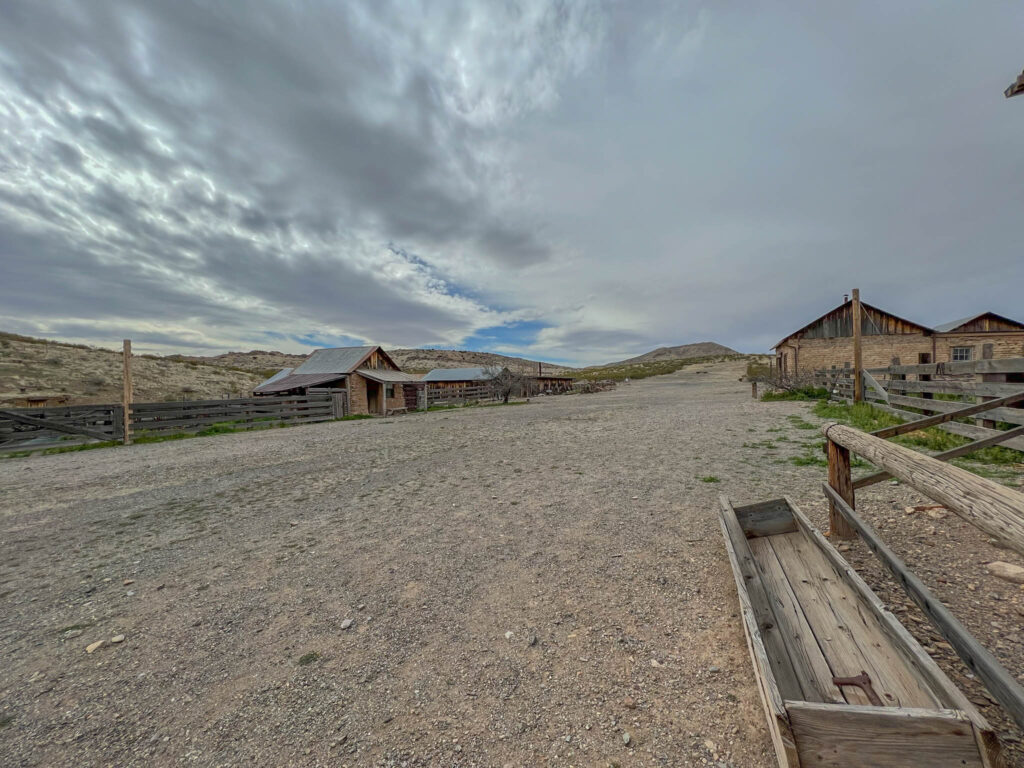
Table of Contents
Heads up: Some of the links in this post are affiliate links. If you buy something through them, it helps support this site—at no extra cost to you. I only recommend stuff I genuinely use and trust.
The Turquoise Trail & Ortiz Mountains
This scenic stretch between Albuquerque and Santa Fe is home to some of New Mexico’s most accessible and fascinating ghost towns. Once thriving mining communities, many of these towns still hold onto their historic roots—even as some reinvent themselves with art galleries, shops, and museums. It’s a great starting point for ghost town explorers, offering a mix of lively stops, quiet ruins, and the occasional curiosity that leaves you wondering whether it was an art installation or just someone’s yard.
Madrid
Once a coal mining town, Madrid has reinvented itself as an artsy enclave with galleries, boutiques, and events like the annual Christmas light parade—which, in true Madrid fashion, manages to be both festive and slightly offbeat. And if you’re wondering—it’s pronounced MAD-rid, not mah-DRID like the capital of Spain. In the 1920s, the town was home to the Madrid Miners baseball team and one of the first lighted stadiums in the country—an ambitious coal company project to keep workers entertained. Today, you can stroll down the main street, grab a bite at the Mine Shaft Tavern, and browse eclectic shops housed in buildings that once held coal, not candles.
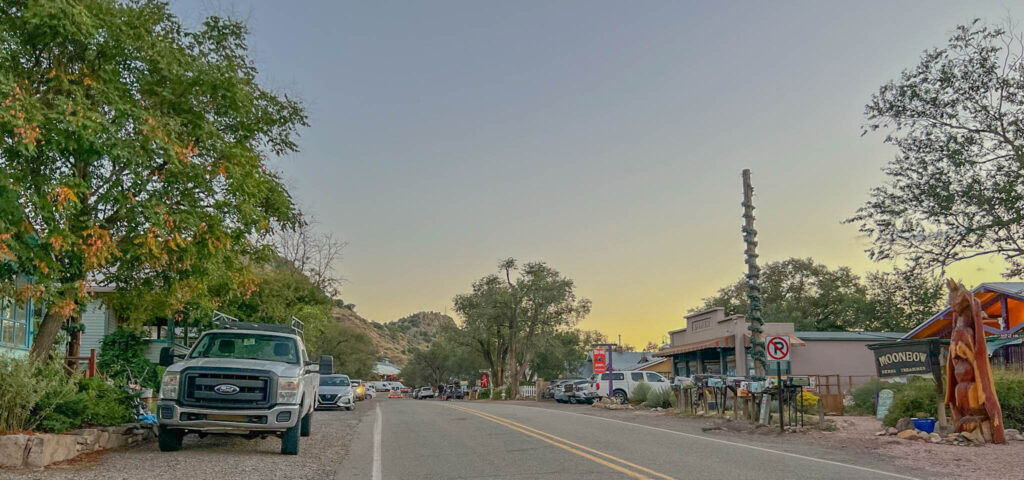

Cerrillos
Cerrillos is quieter but steeped in mining history. Its dirt roads and preserved structures offer a glimpse of the Old West—minus the gunfights and dysentery. The Cerrillos Turquoise Mining Museum adds a mix of mining artifacts, local lore, and even a small petting zoo, because nothing says “precious gemstone history” like feeding a goat. Once a contender for New Mexico’s capital and a key stop during the turquoise boom, Cerrillos has also served as a filming location for several movies and TV shows, including Young Guns, thanks to its frontier look that requires very little Hollywood dressing. Today, it’s a peaceful place to explore on foot and soak in the past at a pleasantly unhurried pace. I wrote a separate blog post about the town called “Cerrillos, New Mexico: Young Guns, Turquoise, and Origami in the Garden.”
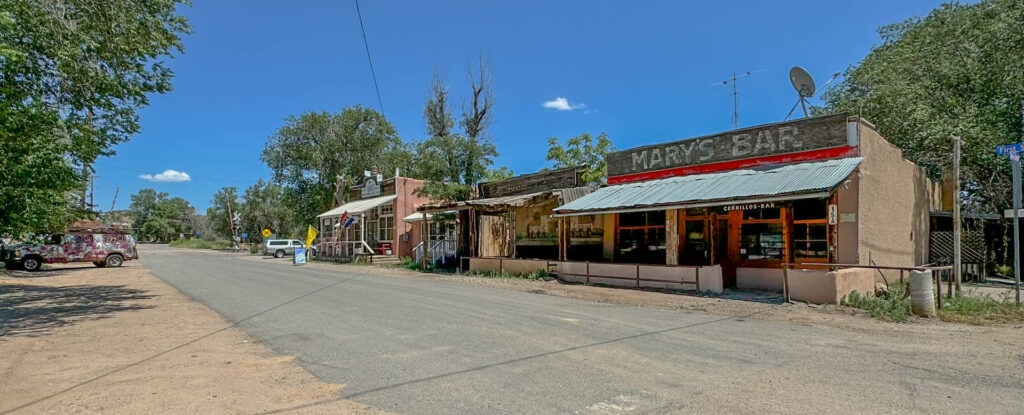
Secondary and Minor Sites:
- Golden – The site of the first gold rush west of the Mississippi, Golden is now home to a few ruins, scattered homes, and a photogenic church. It’s a quick stop, but one that offers a glimpse into early mining history. The town is also known for its unofficial “Mayor of Golden,” a colorful local who gives tours of his eclectic roadside art gallery. When I joined him for a photo after the tour, a tarantula hawk wasp swooped in to photobomb the shot. You can read the full story in my blog post, “Meet the Mayor of Golden, New Mexico… and a Tarantula Hawk Wasp”.
- Galisteo – Still inhabited but undeniably timeless, with adobe buildings and old ranch roads that feel lifted from another era. While not a ghost town in the traditional sense, the village has deep roots in Indigenous and Spanish settlement. Its quiet beauty has long attracted artists, photographers, and filmmakers. Hollywood’s passed through, too—films like No Country for Old Men and Thor were shot nearby, proving Galisteo can play everything from a gritty Western outpost to a small alien-invaded planet.
- Hagan, Coyote, La Bajada, Waldo – These sites are harder to access and often sit on private land, which means you’ll want to do your homework before showing up. Some are little more than foundations or scattered debris, but each has its own backstory tied to mining, railroads, or trade routes.
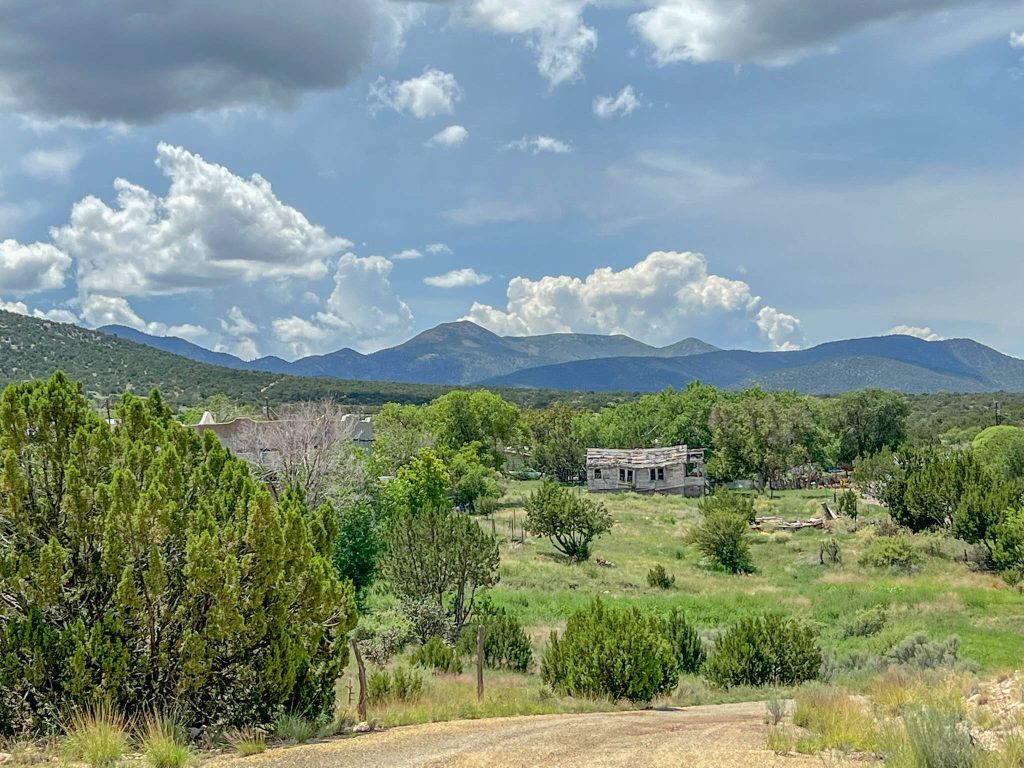
Lincoln County & Billy the Kid Country
Northeast and south-central New Mexico are home to some of the state’s most iconic Old West towns—places forever linked with Billy the Kid, the Lincoln County War, and the rise and fall of gold rush settlements. This region blends legend, landscape, and lingering traces of boomtown ambition. Some towns are little more than crumbling stone walls and sun-bleached headstones. Others, like Lincoln and White Oaks, still have enough original character to make you wonder if you should’ve dressed in boots and a duster just to blend in.
White Oaks
Once a bustling boomtown with an opera house, dozens of businesses, and maybe even a few Billy the Kid sightings, White Oaks still has a pulse—though it beats a little slower these days. While not a classic ghost town in the total sense, it’s quiet, weathered, and partially preserved. Visitors will find the Cedarvale Cemetery, scattered ruins, and a few intact buildings like the School House and the No Scum Allowed Saloon, which still opens its doors for locals, road-trippers, and anyone bold enough to order a drink under a sign that sets expectations pretty clearly. I wrote a blog post about White Oaks and its annual Miner’s Day celebration called “White Oaks, New Mexico: The annual Miner’s Day Festival and a visit to the ‘No Scum Allowed Saloon.’”
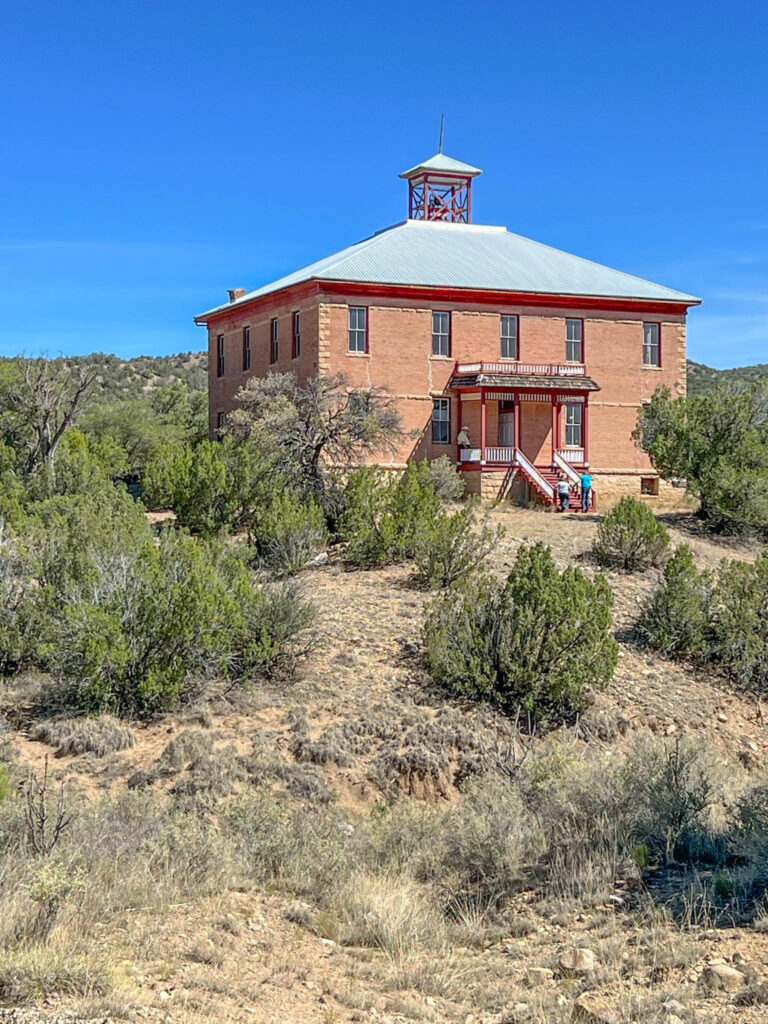
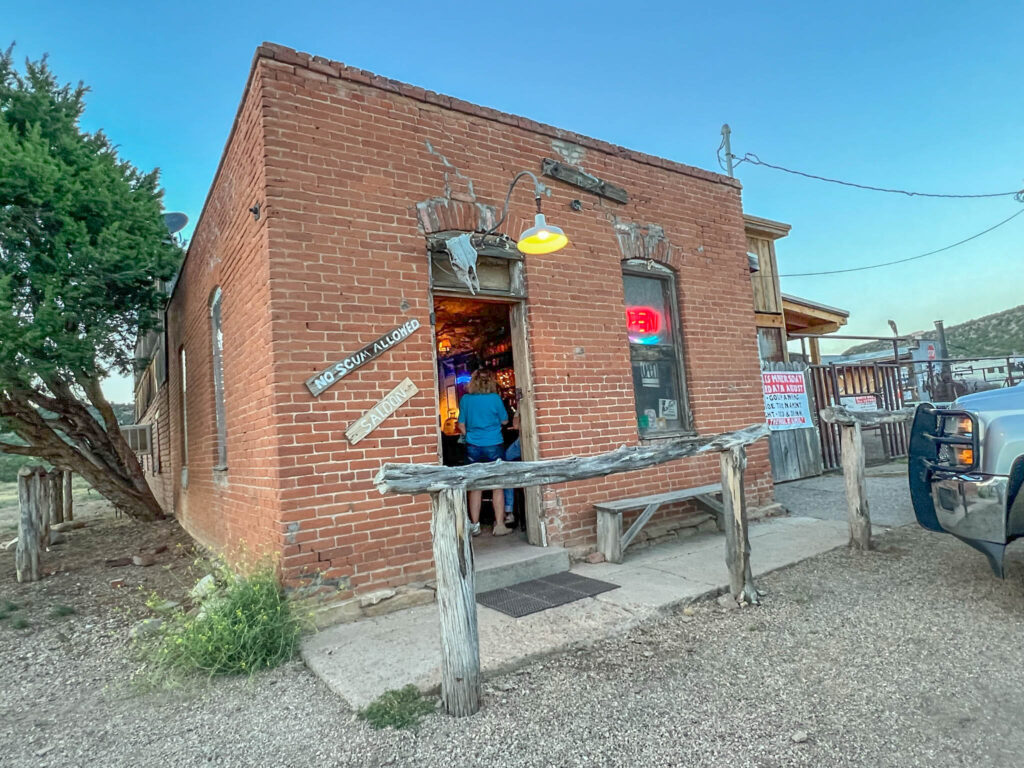
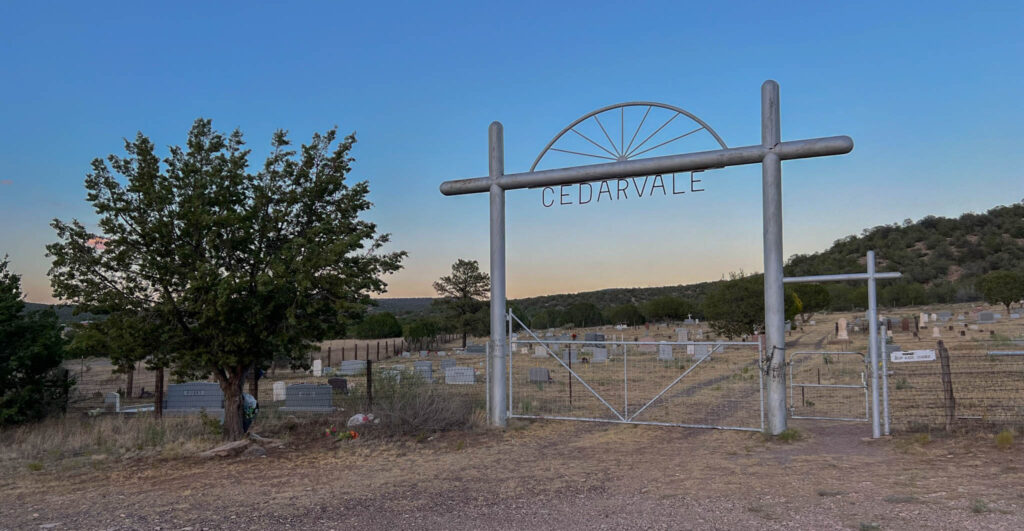
Lincoln
A living history town rather than a ghost town, Lincoln features remarkably preserved 19th-century buildings and direct ties to Billy the Kid and the Lincoln County War. You can walk the same dusty streets where the Kid once escaped jail and explore museums and historic sites like the Old Lincoln County Courthouse. Each August, the town hosts Old Lincoln Days, complete with reenactments, parades, and the long-running Billy the Kid Pageant. Apparently, it’s the longest-running pageant of its kind in the United States, which means some families have been getting dramatically “shot” on stage for three generations and counting. I wrote a blog post about the event called “Lincoln, New Mexico: Billy the Kid Pageant and Old Lincoln Days.”
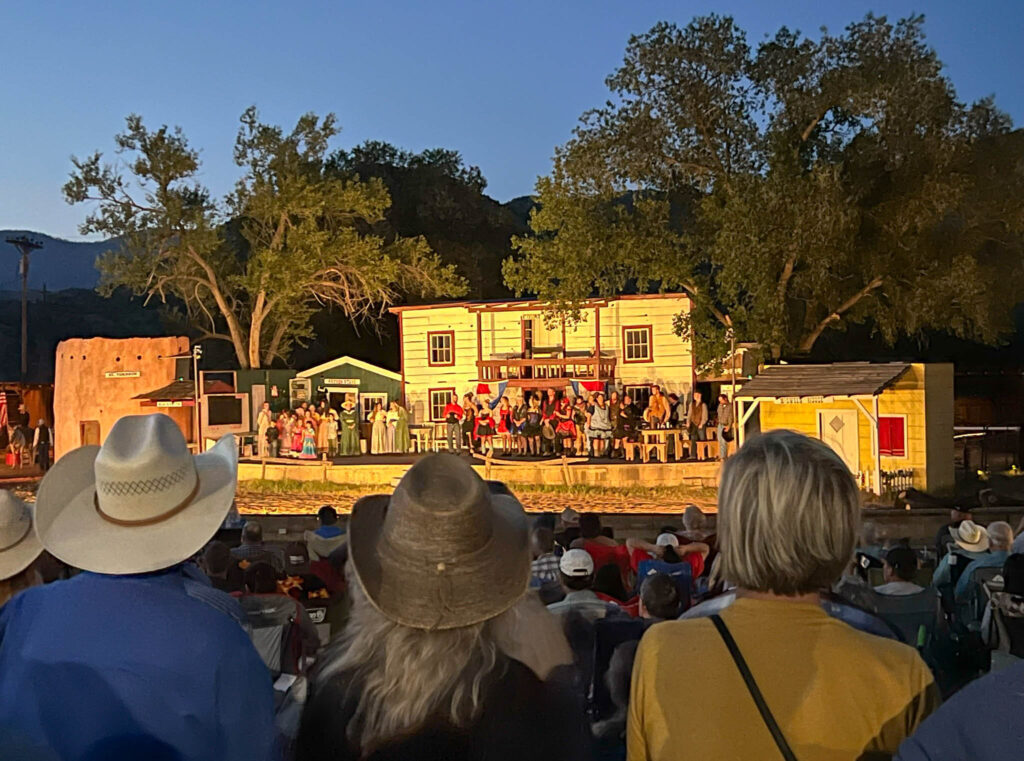
Secondary and Minor Sites:
- Elizabethtown – Also known as E-Town, this site near Eagle Nest was New Mexico’s first incorporated mining town and a full-blown gold rush boomtown in the late 1800s. At its peak, it had saloons, hotels, and enough ambition to rival Santa Fe—until the gold ran out and the population vanished faster than a prospector’s paycheck. Today, you’ll find only ruins, a hillside cemetery, and mountain views that have aged a lot better than the buildings. Bring your imagination—and maybe a windbreaker.
- Baldy Town – Now within Philmont Scout Ranch, this former mining settlement is only accessible with special permission or as part of a trek. While several buildings have been restored for functional use, remnants of the town’s gold and copper mining past remain, offering a quieter, more curated glimpse into frontier history beneath the shadow of Baldy Mountain.
- Fort Stanton, San Pedro, Jicarilla, Reventon – These smaller sites offer a mix of military, mining, and frontier history—some better preserved than others. Fort Stanton is the standout, with a long and varied past that includes use as a military post, tuberculosis hospital, and even a World War II internment camp. San Pedro and Jicarilla are quieter, with just enough remnants to spark the imagination. Reventon is lesser-known but worth a detour for those who like their ghost towns rugged and remote.
The Gila Wilderness & Mogollon Mountains
This rugged corner of southwest New Mexico is home to some of the state’s most scenic ghost towns—the kind that don’t try to impress you, and somehow still do. Mining drew people deep into the mountains in the late 1800s, and while the boom is long gone, the remnants are still easy to find if you’re willing to do a little driving. A few towns have held on with seasonal residents or the occasional gallery, while others are little more than foundations and a sign. Whether you’re looking for half-buried foundations, restored saloons, or a quiet main street with more history than people, this region rewards those willing to wander a little off the pavement.
Mogollon
Set at nearly 7,000 feet above Glenwood, Mogollon is one of New Mexico’s most scenic and well-known ghost towns. It features a mix of preserved buildings, seasonal art galleries, and ruins that hint at its mining heyday. The main street is lined with structures that look like they’ve seen things—and aren’t quite ready to talk about it. It’s quiet, a little quirky, and well worth the drive (assuming you’re okay with a few curves and zero cell service).
Chloride
Chloride is a quieter, semi-restored ghost town with a small year-round population—small enough that you might meet most of them on your way to the museum. The historic general store has been converted into a surprisingly well-curated museum, offering a window into frontier life. It strikes a nice balance between authenticity and accessibility—enough grit to feel real, but not so much you’ll need a tetanus shot.
Secondary and Minor Sites:
- Kingston, Hillsboro, Winston, Monticello, Cuchillo, Pinos Altos – These small, still-inhabited towns share roots in silver mining and boast historic architecture that has stood the test of time. Each offers its own pace and personality, rewarding travelers who appreciate quiet streets, layered history, and a strong sense of place. I’ll be spotlighting Kingston and Hillsboro in a future post—they deserve the extra attention.
- Fierro, Hanover, Valedon, Kelly, Magdalena – These lesser-known spots once pulsed with the clang of mining tools and the hopes of fortune-hunters. Today, most are quieter but still worth the detour, offering scattered ruins, abandoned shafts, and that unmistakable mix of dust, history, and mystery. Each town tells its own version of the mining boom—some with smelter stacks still standing, others with little more than a name on the map and a few stubborn relics. They’re not polished, but that’s part of the appeal. Magdalena, however, is still very much inhabited, with a few galleries, cafés, and events that give it a low-key creative vibe. I’ll be featuring it in a separate post—it deserves a closer look beyond the ghost town label.
- Georgetown, Graham, Carlisle – Lesser-known but worth a detour for seasoned ghost towners. These spots don’t offer polished attractions or guided tours—but that’s the point. What they do offer is solitude, weathered stonework, and the kind of quiet that makes your footsteps feel like part of the story. Bring curiosity… and good tires.
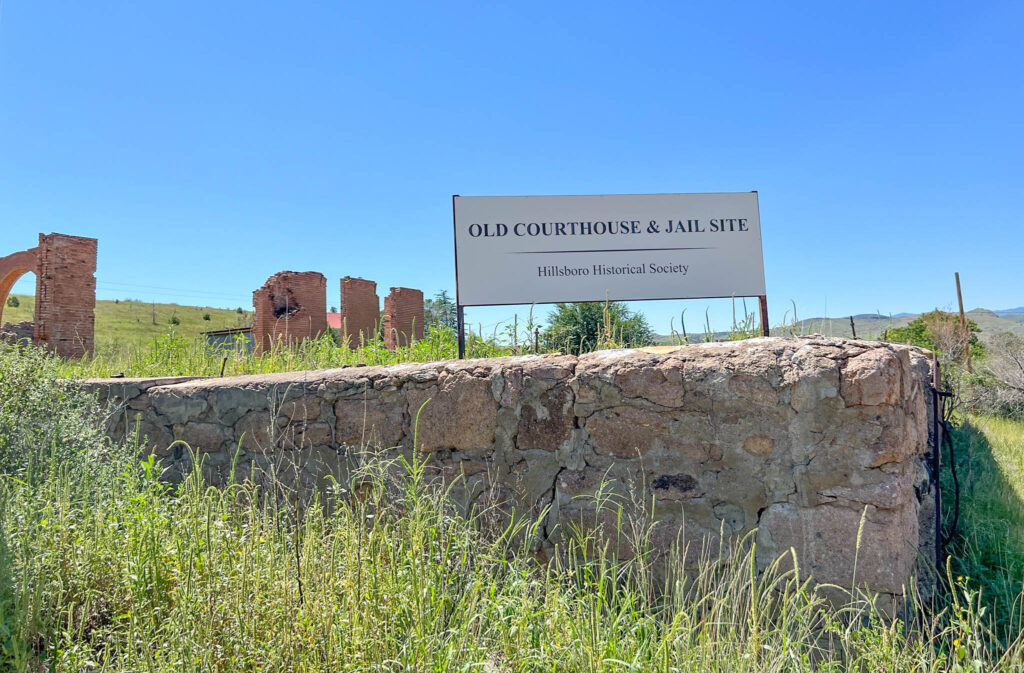
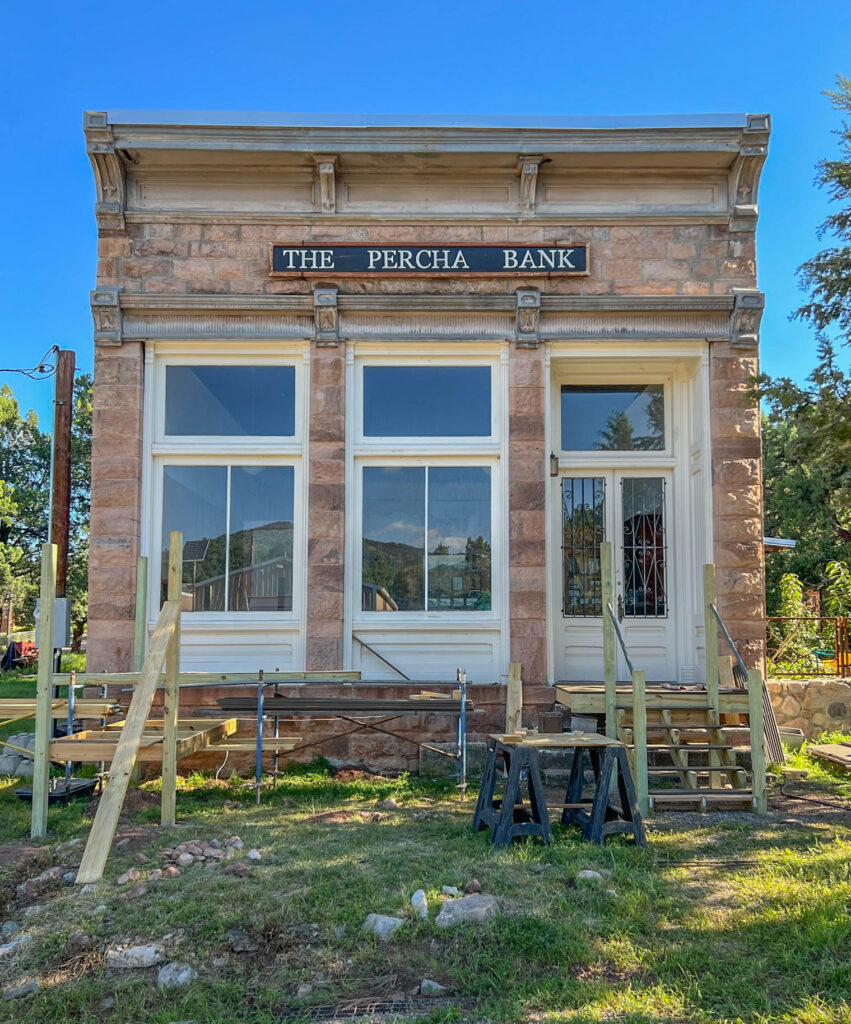
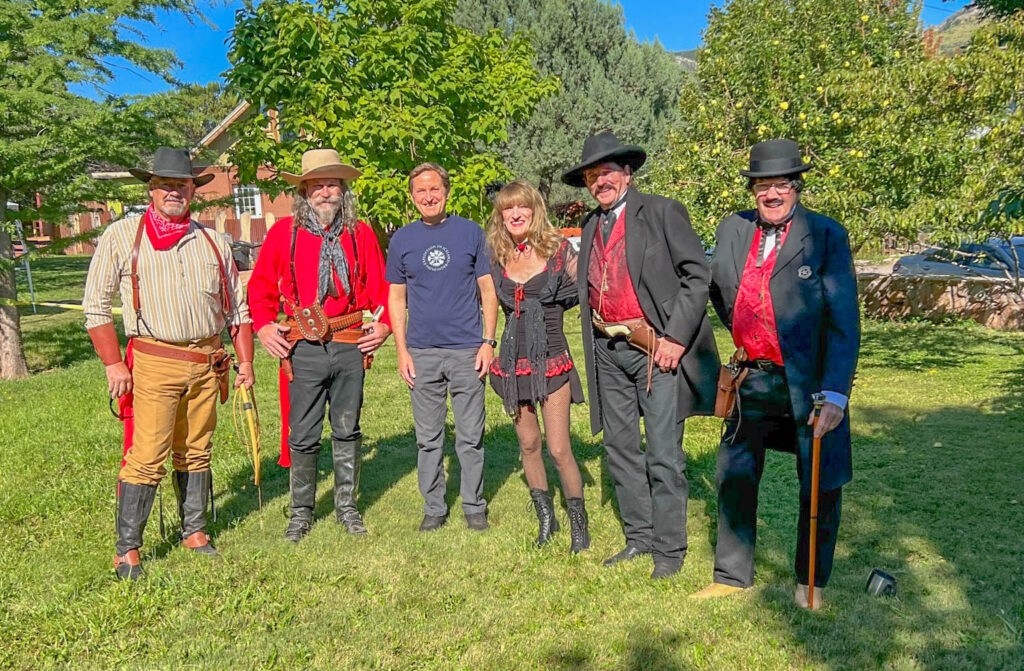
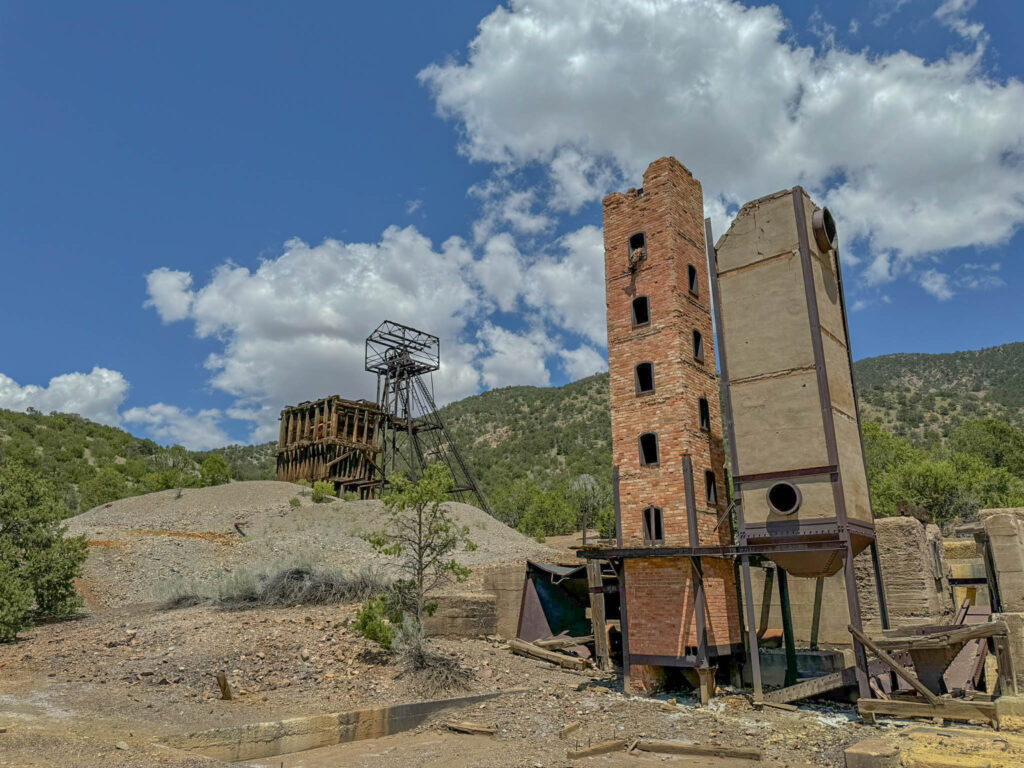
Southwest Borderlands
The desert borderlands of southwestern New Mexico are scattered with ghost towns that tell stories of silver booms, outlaw justice, railroad ambition, and sudden collapse. These were towns built fast—often around a single mine, stage stop, or rail spur—and abandoned nearly as quickly when fortunes dried up or violence found its way in. Some, like Shakespeare and Lake Valley, remain impressively intact. Others, like Old Hachita and Steins, are slowly surrendering to the sun, wind, and gravity. This is New Mexico ghost town country in its rawest form—where isolation isn’t just part of the story, it is the story.
Shakespeare
Privately owned and remarkably preserved, Shakespeare Ghost Town near Lordsburg offers one of the most immersive Old West experiences in New Mexico—complete with creaky floorboards, colorful outlaws, and the occasional dramatic hanging (thankfully no longer a regular feature). Once a stagecoach stop and mining boomtown, it became notorious as a hangout for figures like “Russian Bill” and Sandy King—both of whom ended their story at the end of a rope, right here. Today, the town is open for guided tours most weekends, led by descendants of the families who helped preserve it. Visitors can explore original buildings like the saloon, assay office, and Grant House while hearing true frontier stories told with grit, humor, and the kind of detail that suggests these tales have been passed down around a kitchen table more than once. Tour schedules and details are posted at shakespeareghostown.com.
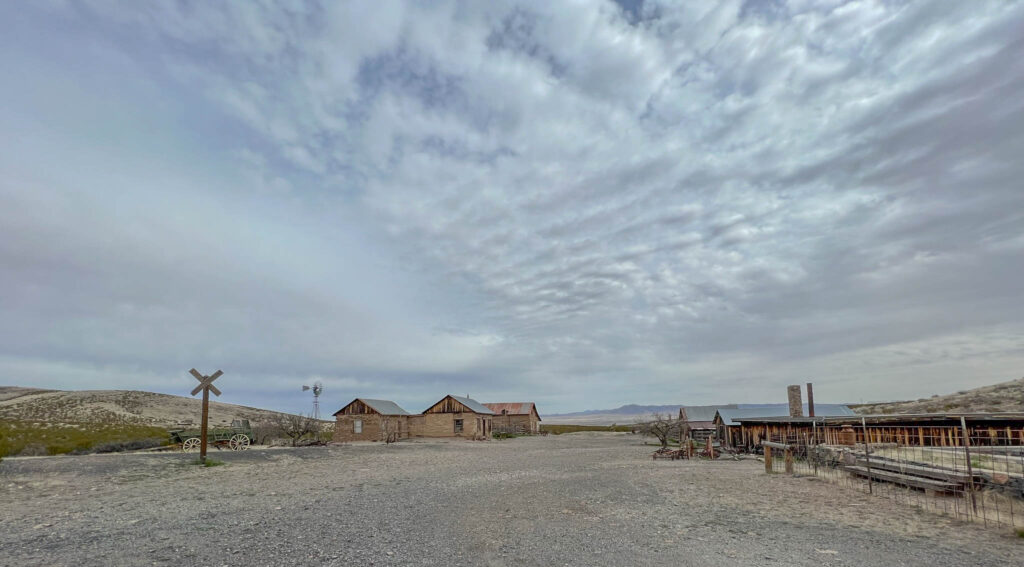
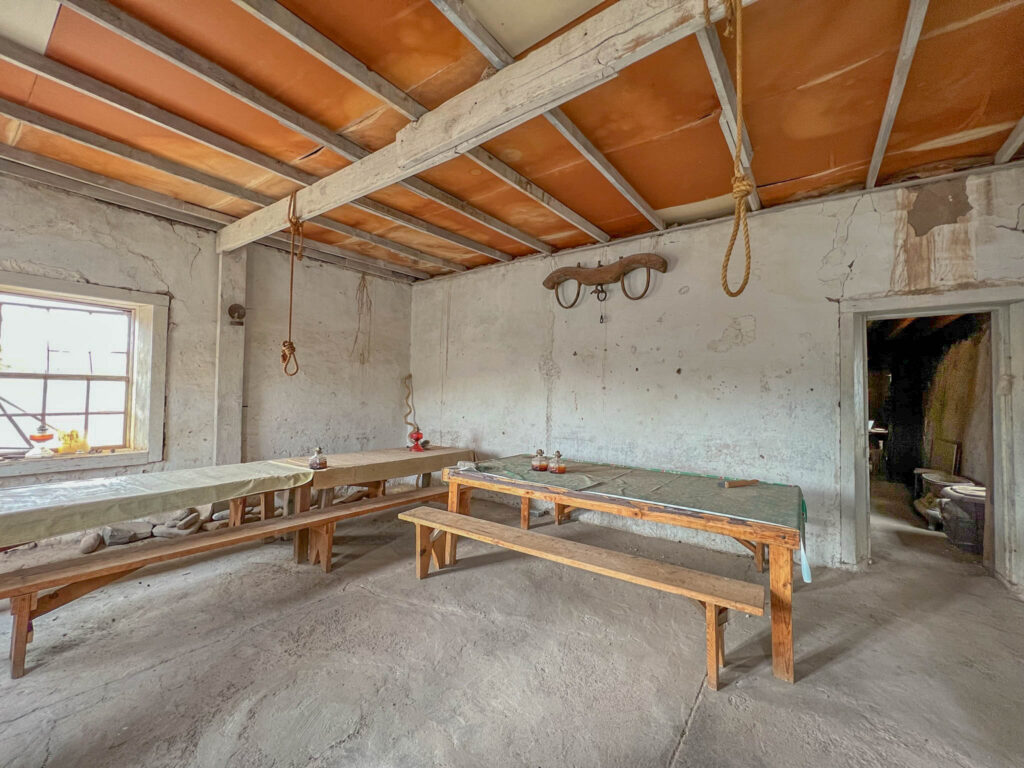
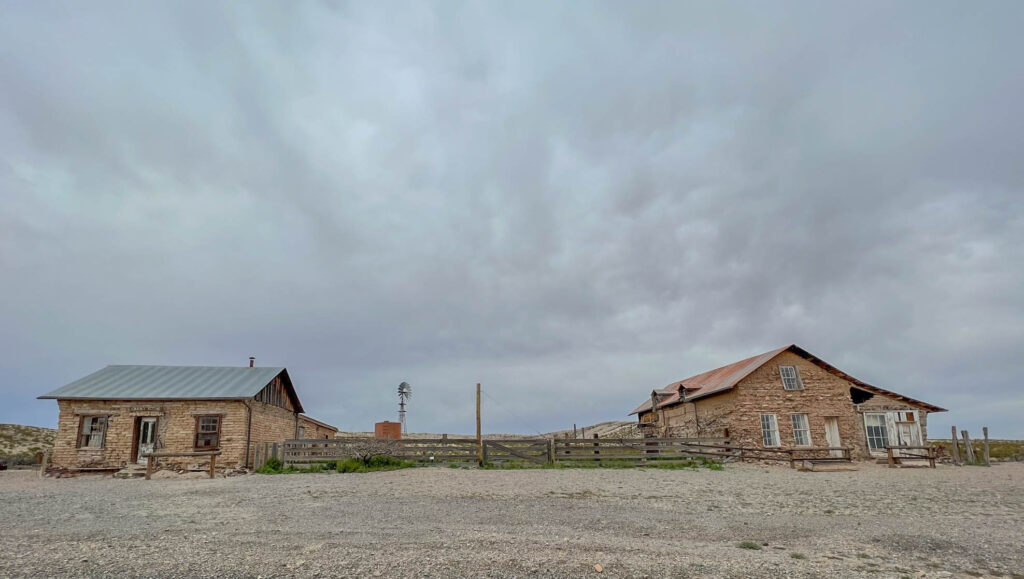
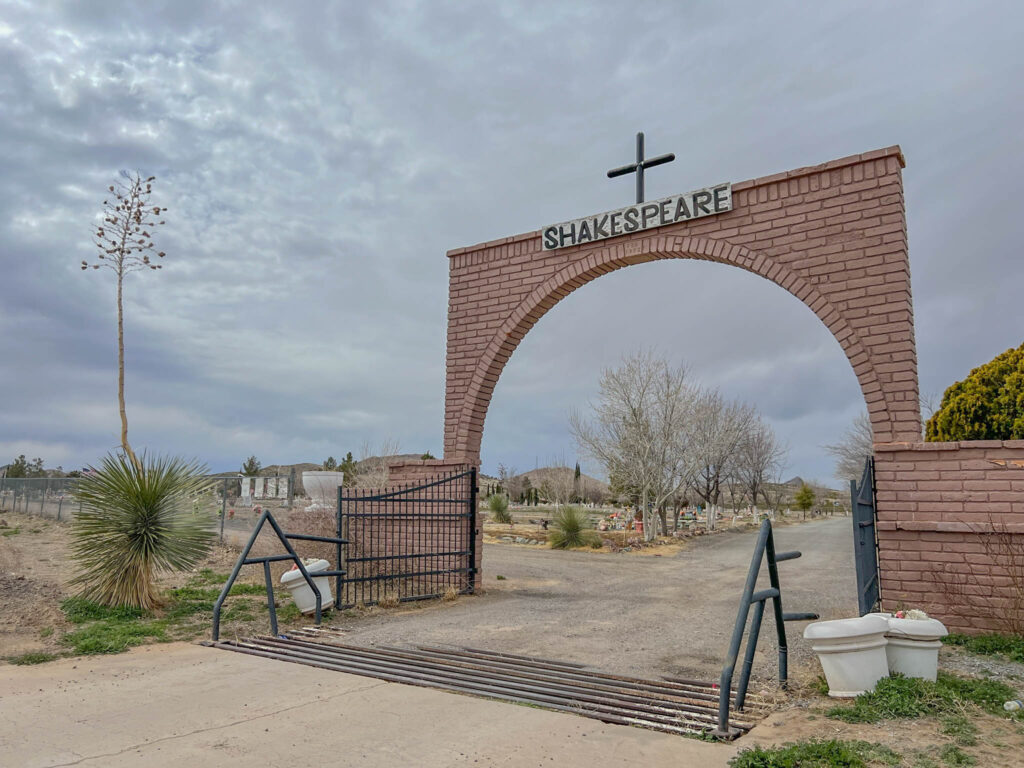
Lake Valley
Lake Valley is what happens when a mining boomtown goes all in on silver… and the market crashes two years later. Once home to the legendary Bridal Chamber Mine—so rich it barely needed digging—the town emptied out almost as fast as it filled up. At its peak, the population reached over 4,000, but by the 1890s, the streets were quiet and the saloons had gone dry. Today it’s managed by the BLM, with a self-guided walking tour past a restored schoolhouse, chapel, and just enough interpretive signs to keep your imagination from wandering too far off trail.
Old Hachita
Remote and ruinous, Old Hachita was once home to copper, silver, and zinc miners tough enough to carve a life out of the Chihuahuan Desert. At its peak in the early 1900s, it had stores, saloons, and even a schoolhouse—but the harsh climate, water shortages, and a played-out mine eventually cleared the place out. Today, all that remains are skeletal walls, weathered stonework, and the kind of silence that makes you feel like you’re being watched (perhaps by a rattlesnake). It’s not easy to reach, but for those who make the drive, it feels like a place the desert is slowly—but stubbornly—reclaiming.
Columbus
Still inhabited but haunted by history, Columbus is best known as the site of Pancho Villa’s 1916 raid—the only time a foreign power invaded the U.S. mainland in the 20th century. The town was a bustling stop on the El Paso & Southwestern Railroad, which brought commerce and settlers before the raid upended everything. After the attack, Columbus became a military hub, home to Camp Furlong and the launching point for General Pershing’s Punitive Expedition into Mexico. Though the town never fully recovered its former momentum, it rebuilt and endured. Today, you’ll find a small museum, Pancho Villa State Park, scattered ruins, and a desert quiet that remembers what happened here—even if most people don’t.
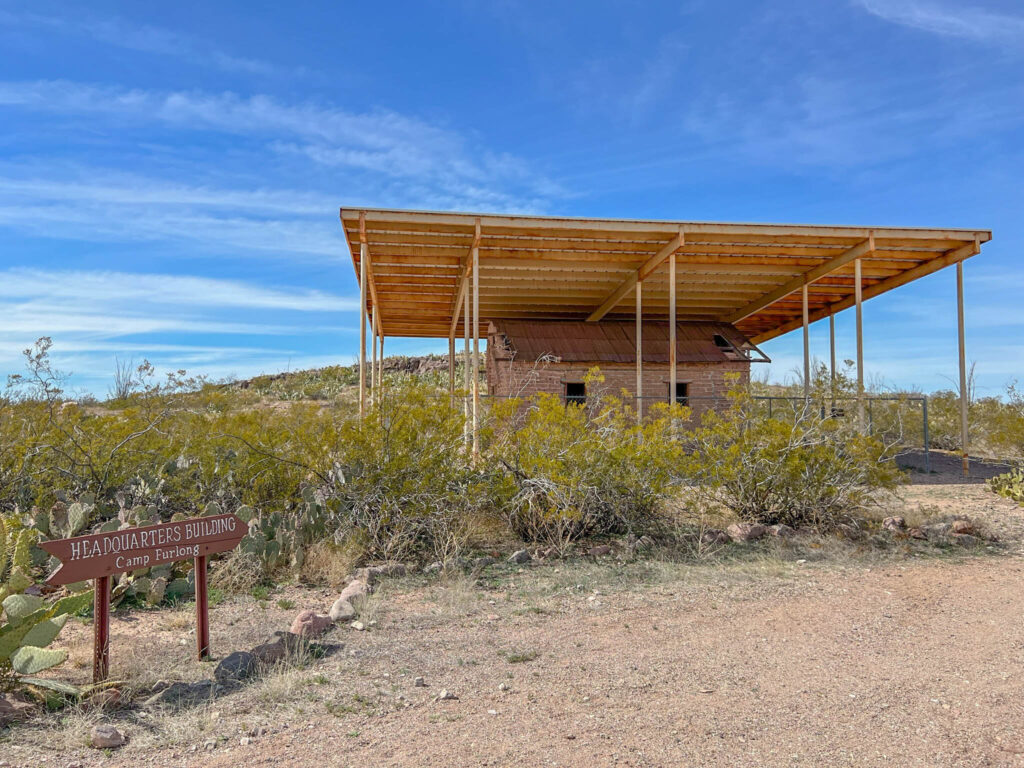
Secondary and Minor Sites:
- Tyrone, Chance City, Orogrande, San Antonio, Valverde – Scattered across southern New Mexico, these towns trace their roots to mining booms, railroad stops, and borderland tensions. Tyrone was once a model company town before being swallowed by an open-pit mine. Orogrande, despite its name (“big gold”), never lived up to the hype. San Antonio and Valverde played roles in Civil War history and river trade, while Chance City… didn’t get much of one.
- Cloverdale, Steins, Gage, Cooks Peak – These are ghost towns for the truly committed—remote, rugged, and barely clinging to the map. Cloverdale, near New Mexico’s bootheel, feels like the edge of the world. Steins, once a thriving railroad stop, still has visible ruins off I-10 and a murder mystery that lingers in local memory. Gage is little more than a freeway exit now, but once hosted a hotel and depot for rail passengers. Cooks Peak, named for the nearby summit, was a silver mining town—now marked by scattered foundations, forgotten trails, and the occasional prospector’s tale lost to time.

The High Plains & Rio Puerco Valley
If you’re looking for the kind of ghost towns that creak in the wind and sit just off the old cattle trails or forgotten rail lines, this is your region. The High Plains and Rio Puerco Valley are scattered with former coal towns, Route 66 relics, ranching outposts, and once-promising railroad stops. Some are eerily well-preserved, others barely more than foundations and a name on an old map. But together, they offer a wide-angle look at New Mexico’s frontier past—from mining booms to military forts, and the many ways these towns faded from the map.
Dawson
Once one of the largest coal towns in the Southwest, Dawson is now best known for its haunting cemetery, filled with rows of white-painted iron crosses. Each one marks a miner lost in one of two deadly disasters—1913 and 1923—that claimed nearly 400 lives combined. The town was officially abandoned in the 1950s, and today, all that remains is the cemetery, a few scattered remnants, and a powerful silence that settles over the hills like coal dust that never quite cleared.
Koehler
Located west of Raton, Koehler was another coal-mining hub that supplied fuel to the Denver and Rio Grande Railroad. The town faded when the coal industry collapsed and is now mostly ruins, but some foundations and industrial relics still remain if you’re up for a bit of off-road exploring.
Trementina
Trementina may be quiet today, but back in the early 1900s, this remote ranching town had churches, a post office, a boarding school, and enough community spirit to fill a dance hall on a Saturday night. Named after the sticky resin (trementina) harvested from local piñon trees, the town slowly emptied out in the mid-20th century as drought and city jobs pulled families elsewhere. What’s left now are adobe ruins, rusting windmills, and a windswept cemetery where generations of homesteaders still rest under the New Mexico sky. Bring water, gas, and a sense of reverence—today’s year-round population is estimated at fewer than 30 people, making it one of New Mexico’s loneliest outposts still clinging to life.
Yeso
Yeso is one of those ghost towns that feels like it’s been politely declining for over a century. Founded in 1906 as a watering stop along the Belen Cutoff of the Santa Fe Railway, it once had a post office, hotel, general store, and a hopeful glint in its eye. Today, what remains are weather-beaten ruins, a few stubborn structures refusing to fall, and prairie winds strong enough to make you double-check your car door.
Cuervo
Just off I-40, Cuervo is one of those ghost towns that feels more passed through than arrived at. Once a small railroad and ranching community that expanded with the rise of Route 66, Cuervo began to fade after the interstate bypassed it. Today, the remains include crumbling adobe homes, a weathered stone church, and a handful of buildings quietly surrendering to time. It’s an easy, worthwhile stop for travelers interested in the quieter corners of Route 66 history—just be mindful of private property and fragile structures.
Watrous and Loma Parda
These two sites near Fort Union offer a mix of frontier history and military legacy. Watrous was a supply hub, while Loma Parda—just across the river—had a rowdy reputation as a place where soldiers went to drink, dance, and occasionally disappear for a few days. Both are quiet now, but the history still lingers in the foundations.
Secondary and Minor Sites:
- Fort Union, La Liendre, La Cueva, Catskill, Colonias, Puerto de Luna, Cuervo, Ancho – Railroad stops, ranching centers, and forgotten trading towns, each with a few ruins and stories to tell—if you can find someone to tell them.
- Colfax, Gardiner, Cimarron, Rayado – Deeply tied to Old West lore and the Santa Fe Trail. Cimarron is still inhabited, but it doesn’t take much to imagine the outlaws and traders who once passed through.
- Gamerco, Allison, Mentmore, Yankee, Bell, Blossburg, Swastika, Brilliant, Sugarite, Tiptonville, San Geronimo, Abo, Riley, San Acacia, San Marcial, Dusty / Ojo Caliente – A grab bag of mining camps, mission ruins, coal towns, and railroad depots—many barely marked, all worth the side trip if you’re the type who finds beauty in broken timbers and rusted dreams.
Southern Desert & Organ Mountains Region
This southern stretch of New Mexico offers a different kind of ghost town experience—one where desert landscapes, weathered ruins, and wide-open skies create a quieter kind of drama. Some towns faded due to shifting rivers or railroad routes, while others were tied to mining and health resorts that simply couldn’t outlast the elements.
Dripping Springs
Just outside Las Cruces, a scenic hike through the Organ Mountains leads to the ruins of a 19th-century resort and sanatorium. Once a place where people came to heal in the dry desert air, today it’s a blend of ghost town and nature retreat—complete with dramatic cliffs, mule deer sightings, and the occasional overly confident lizard. It’s also part of the New Mexico Birding Trail, so don’t be surprised if a phainopepla or canyon towhee tries to upstage the ruins.
Secondary and Minor Sites:
- Organ – A quiet, partially inhabited town with mining roots and a front-row view of the jagged Organ Mountains. Founded in the 1880s to support nearby gold and silver mines, Organ once buzzed with saloons, stores, and a post office that’s still in service today.
- Brice – A faint memory in the desert, with ruins and rusted relics that hint at a short-lived mining past. Little is known about its heyday, but what remains feels like a forgotten movie set—half-buried walls, scattered debris, and the occasional creosote bush growing where a saloon might’ve stood. You won’t find gift shops or tour guides here—just sun, silence, and whatever story your imagination fills in.
How to Visit New Mexico’s Ghost Towns Without Getting Arrested (or Cursed)
Before you head off into the desert looking for history—or just a good photo op—it’s worth going over a few basics. Ghost towns may be abandoned, but that doesn’t mean they’re lawless playgrounds for amateur explorers or aspiring influencers with drone cameras and no common sense.
Here’s how to explore them responsibly—and maybe even come back with a good story:
- Don’t Trespass—Seriously. Many ghost towns, or parts of them, are on private land. A crumbling wall does not equal an open invitation. If there’s a “No Trespassing” sign, believe it.
- Watch Your Step. Ghost towns weren’t built to last forever. Expect loose boards, rusted nails, crumbling adobe, and the occasional open mine shaft. This isn’t Disneyland—don’t treat it like a jungle gym.
- Be Rattlesnake-Aware. Old boards, stone foundations, and sunny rock piles are prime lounging spots for New Mexico’s slithery residents. Don’t poke around blindly, and wear decent shoes. For more tips on staying safe (and smart) around rattlesnakes—as well as the different species you may encounter—check out my blog post: “Rattled in the Land of Enchantment?”
- Leave It Be. That rusted gear or glass bottle might look cool on your shelf, but it’s part of the story. Removing artifacts erases the experience for future visitors—and might invite a little bad luck, depending on who you ask.
- Pack Smart. Most ghost towns are far from services. Bring water, sun protection, sturdy shoes, and either an offline map or an actual paper one. Cell service is spotty at best—your ghost town adventure should not turn into a search-and-rescue mission.
- Respect the Silence. These places often carry heavy histories. Don’t blare music or treat them like a film set. Slow down. Listen, and let the place do the speaking.
- Plan Ahead. Check road and weather conditions before you go. Some towns are only accessible seasonally, and others (like Shakespeare) are open for guided tours on certain weekends only.
Resources
If you’re looking to dive deeper into New Mexico’s abandoned towns, check out New Mexico’s Best Ghost Towns by Philip Varney. It’s a well-researched guide to help you uncover the stories (and turnoffs) behind the ruins.
Thought for the Week
This week’s quote comes from William Faulkner (1897–1962)—yes, him again. After using one of his lines in last week’s post on haunted places in Albuquerque, I realized his words fit just as well when talking about New Mexico’s ghost towns. Faulkner was a Southern novelist and Nobel Prize winner who often wrote about how the past seeps into the present, shaping lives in ways both subtle and haunting.
In New Mexico’s ghost towns, history doesn’t feel distant. It feels paused. You walk past crumbling adobe walls, rusted machinery, and faded cemetery gates—and suddenly, you’re not just looking at the past. You’re standing in it.
So this week, if you find yourself near forgotten places—on a back road, in an old building, even deep in your own memories—listen closely. The past may not be as far away as you think.
“The past is never dead. It’s not even past.”
— William Faulkner
Thanks for reading and happy travels!
Mark (The New Mexico Travel Guy)

Mark Aspelin, The New Mexico Travel Guy (www.newmexicotravelguy.com), is a travel writer, conservation biologist, project manager, and author of two books. He’s visited over 100 countries and all 50 U.S. states—just enough to land in the Travelers’ Century Club and make choosing a favorite place nearly impossible. He’s currently on a questionable mission to visit every town in New Mexico (there are over 500) and write a story about each one, with plans to wrap it up sometime before his early to mid 100s. Mark balances his writing with conservation and project work from his home base in the East Mountains near Albuquerque, New Mexico.

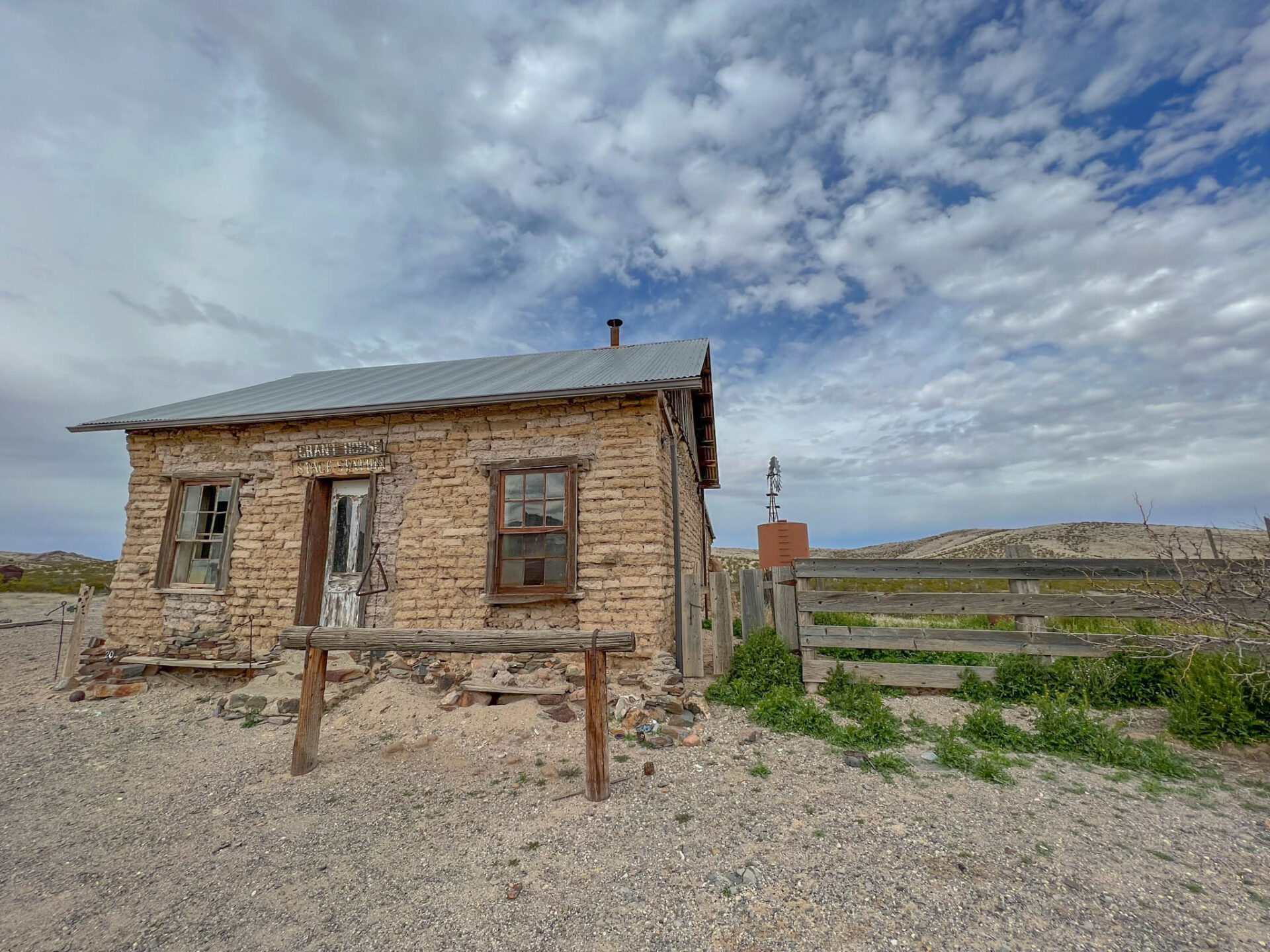



Leave a reply